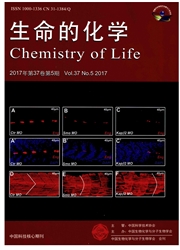

 中文摘要:
中文摘要:
胆固醇是动物细胞细胞膜的重要组成成分,其做为细胞和环境之间的屏障调节细胞膜的流动性。胆固醇是体内所有的类固醇激素和胆酸合成的前体物质,参与体内代谢。同时胆固醇在神经系统的发育中也起着重要的作用。在血浆中胆固醇以低密度脂蛋白和高密度脂蛋白这两种胆固醇运载血脂蛋白的形式运输。动物细胞通过细胞表面的低密度脂蛋白受体(LDLreceptor,LDLR)介导的内吞可以从血液中摄取富含胆固醇的低密度脂蛋白,当细胞表面的LDLR的功能缺陷时,可以导致高胆固醇血症,继而引起动脉粥样硬化、冠心病和中风等严重疾病。本文综述了LDL受体的概述及其通过内吞调节血液中低密度脂蛋白胆固醇水平的作用,并对LDL受体的调节进行了阐述。
 英文摘要:
英文摘要:
Cholesterol is an essential component of the plasma membrane of animal cells,which maintains the barrier function between cells and environment modulates fluidity. Cholesterol is also the precursor for the manufacture of all steroid hormones and bile acids, and it plays a crucial role in the development of nervous system. In blood stream, cholesterol is transported in two major cholesterol-carrying blood lipoproteins: LDL and HDL lipoprotein particles. The process of uptake LDL-Cholesterol from blood in animal cells mediated by cell surface receptor for LDL. The dysfunction of LDL receptor on cell surface leads to hypercholesterol- emia which in turn causes atherosclerosis, coronary heart disease and stroke. This review provides an over-view of the LDL receptor and its role in regulating blood LDL-Cholesterol levels and the regulation of LDL receptor are described.
 同期刊论文项目
同期刊论文项目
 同项目期刊论文
同项目期刊论文
 期刊信息
期刊信息
